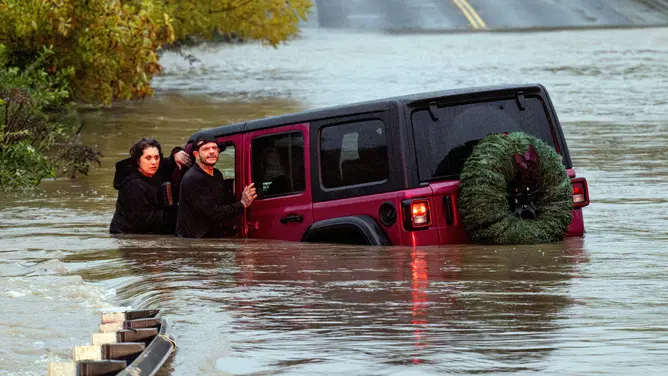At least 4 fatalities and widespread power outages
A powerful atmospheric river event, coupled with a bomb cyclone, caused havoc along the U.S. West Coast and parts of Canada, claiming at least four lives and leaving thousands without electricity. Two deaths were reported in Washington from falling trees while flooding and treacherous seas in California resulted in two more fatalities.
Historic bomb cyclone triggers hurricane-force winds

The bomb cyclone, one of the most intense storms on record, plummeted to an extraordinary 945 millibars off the Washington coast. Hurricane-force winds downed trees and power lines, cutting power for nearly 1 million customers at the storm’s peak. The system’s dramatic satellite imagery resembled that of a hurricane and will likely be remembered for decades.
Amtrak train incident highlights storm’s impact
In Stanwood, Washington, an Amtrak train collided with a tree felled by the storm, heavily damaging the engine. Fortunately, no passengers sustained serious injuries.
Power restoration faces challenges
Puget Sound Energy reported extensive damage to its high-voltage transmission system, especially in Snohomish and King counties. Crews have prioritized restoring power to hospitals and critical infrastructure but warned it could take several days to address all outages, especially in remote areas.
What’s next? More precipitation is on the horizon
While the storm’s intensity is unlikely to be repeated, rounds of rain are forecasted to hit the West Coast early this week. Saturated soils and heavy Thanksgiving travel could increase risks in affected areas, particularly in communities from northern California to southern Washington.
Record rainfall underscores the severity
Santa Rosa, California, saw over 12 inches of rain in just three days during the event, a 1-in-1,000-year precipitation occurrence. Upcoming storms are expected to be less severe but will still bring snow to the Sierra Nevada and rain to the Pacific Northwest.